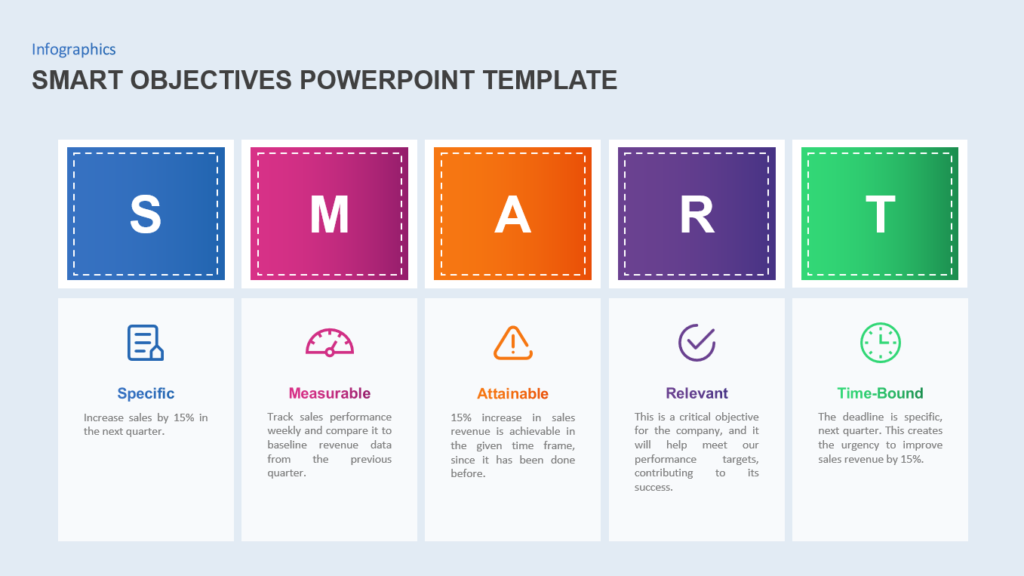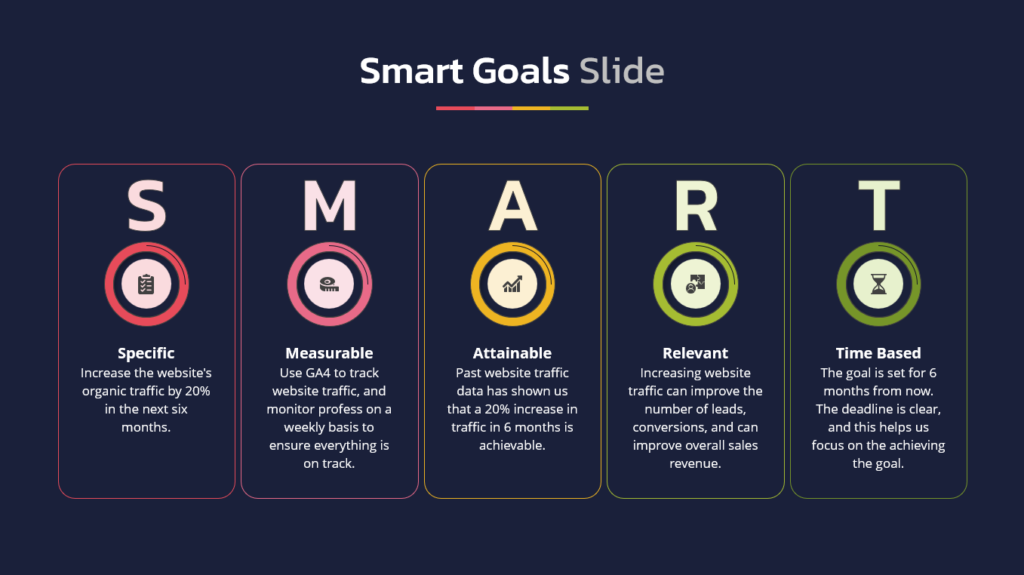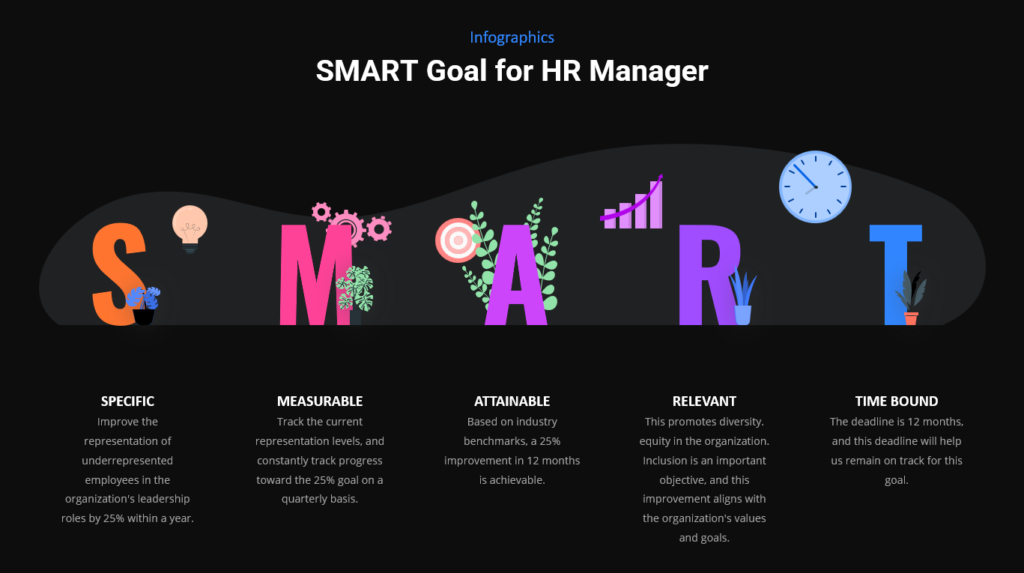SMART Goals for Managers – Examples and PPT Templates

In this article, we’ll take a look at some SMART leadership goal examples and learn more about what SMART goals are and how you can use them to improve your team’s effectiveness. Let’s get started with a brief introduction, and then move on to SMART goals for managers and examples.
SMART Goals – What are they?
SMART is a framework that you can use to set goals that are SMART – Specific, Measurable, Achievable, Relevant, and Time-bound. By setting SMART goals, you can ensure that your goals are defined well and achievable, which will increase the likelihood of success.
To set SMART goals, your goals must be:
Specific – Goals should be clearly defined. Leave no room for misinterpretation.
Measurable – Goals should be measurable. This helps with the tracking and evaluation of your project.
Achievable – Your goals should be achievable in the time and with the resources you have.
Relevant – Your goals must be relevant to and aligned with your broader vision, mission, and values.
Time-bound – Your goal must have a specific deadline for completion.
Why Should Managers set SMART Goals?
Managers should set SMART goals as it can help them achieve success in your role, and drive their organization forward. Here are some reasons why you as a manager should set SMART goals:
Clarity
SMART goals can provide clarity and focus to you as you can better understand what you need to accomplish and how to do it.
Motivation
Setting SMART goals can be highly motivating since there are clear targets to work towards. This can help you stay engaged and energized, even while facing challenges and setbacks.
Accountability
Setting SMART goals helps you stay accountable for progress. By tracking your progress and measuring your results against your goals, you can identify areas where you need to improve and adjustment accordingly.
Alignment
SMART goals help you align your efforts with the broader goals of your organization. By setting SMART goals that are relevant and aligned with the overall mission and vision of the organization, you can ensure that your work is contributing to the success of the organization as a whole.
Efficiency
SMART goals can help managers work more efficiently. Breaking down largen goals into smaller ones tasks, can help you stay focused on what matters most.
Setting SMART goals is an effective way for you as a manager to achieve success, stay motivated, and drive your organization forward. Let’s check out some examples to better understand what SMART goals are. The images below are all downloadable templates that you can use in your presentations.
SMART Goals for Managers Examples
Here are some examples of SMART goals for leaders and managers:
SMART goal for a manager: Example 1
Specific: Increase sales by 15% in the next quarter.
Measurable: Track sales performance weekly and compare it to baseline revenue data from the previous quarter.
Achievable: 15% increase in sales revenue is achievable in the given time frame, since it has been done before.
Relevant: This is a critical objective for the company, and it will help meet our performance targets, which will contribute to the company’s success.
Time-bound: The deadline is specific, next quarter. This creates the urgency to improve sales revenue by 15%.
SMART goal for a digital marketing manager: Example 2
Specific: Increase website’s organic traffic by 20% in the next six months.
Measurable: Use GA4 to track website traffic, and monitor profess on a weekly basis to ensure everything is on track.
Achievable: Past website traffic data has shown us that a 20% increase in traffic in 6 months is achievable.
Relevant: Increasing website traffic can improve the number of leads, conversions, and can improve overall sales revenue.
Time-bound: The goal is set for 6 months from now. The deadline is clear and this helps us focus on the achieving the goal.
SMART goal for a Human Resource manager: Example 3
Specific: Improve the representation of underrepresented employees in the organization’s leadership roles by 25% within a year.
Measurable: Track the current representation levels, and constantly track progress toward the 25% goal on a quarterly basis.
Achievable: Based on industry benchmarks from similar organizations, a 25% improvement in representation of underrepresented employees in leadership roles in 12 months is achievable.
Relevant: This promotes diversity. equity in the organization. Inclusion is an important objective for the organization, and this improvement aligns with the organization’s values and goals.
Time-bound: The deadline is 12 months, and this deadline will help us remain on track for this goal.
There you have it, 3 examples that should help you plan and create your own SMART goals. You can also use the included PowerPoint templates for your SMART goals. We will be updating this article with more goals, templates, and useful tips, so be sure to bookmark this page and visit us soon!





